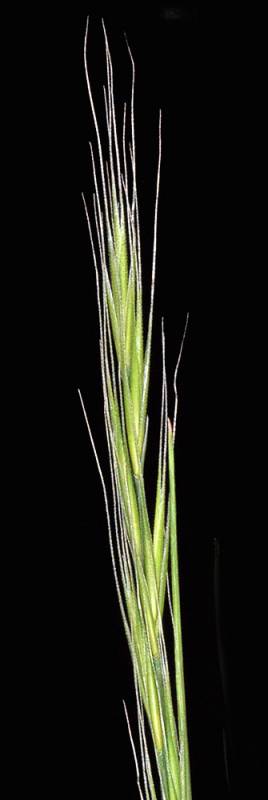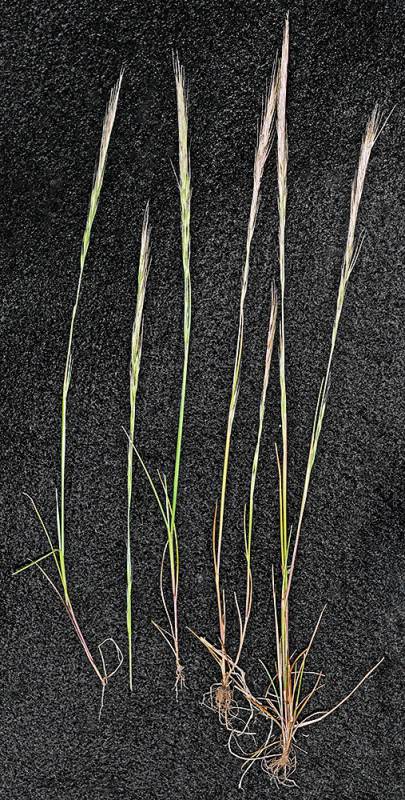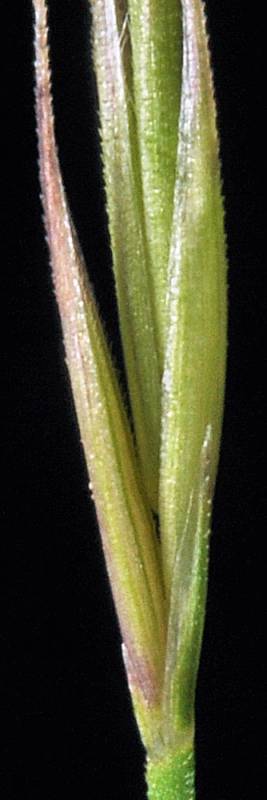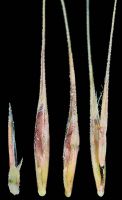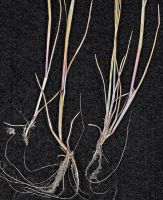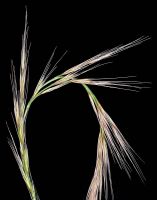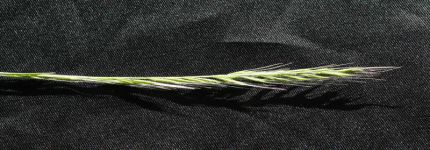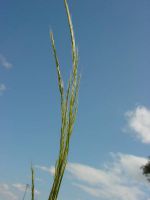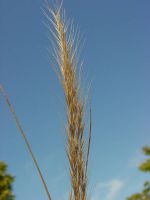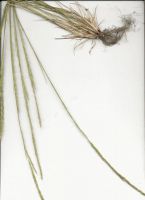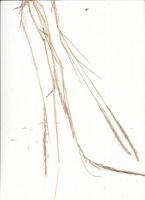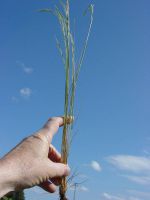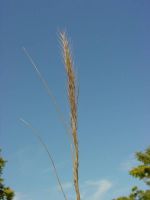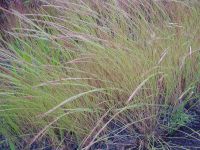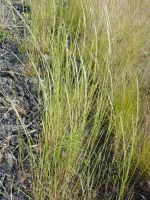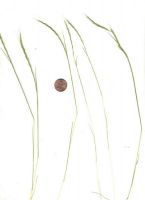Distribution: Occurring on both sides of the Cascades crest in Washington; Alaska to California, east across most of North America to the Atlantic Coast.
Habitat: Balds, open slopes, grasslands, roadsides, wastelots, and other disturbed open areas
Flowers: April-June
Origin: Introduced from Europe
Growth Duration: Annual
Conservation Status: Not of concern
Pollination: Wind
Simple or tufted annual 3-4 dm. tall, the culms glabrous and hollow, mostly concealed by the numerous leaves.
Sheaths open, glabrous; leaf blades about 1 mm. broad, usually folded, glabrous beneath and puberulent above; auricles lacking; ligules membranous, erose, 0.2-0.6 mm. long.
Inflorescence a very narrow, elongate panicle 10-20 cm. long; spikelets 4- to 6-flowered, articulating above the glumes; glumes very narrowly lanceolate, unequal, the first about 1.5 mm. long, 1-nerved, the second 3-5 mm. long, 3-nerved; lemmas glabrous, about 5.5 mm. long, with a terminal awn 10-15 mm. long; stamens usually 1.
Utricle
Publication: Fl. Bad. 1: 8. 1805.
Festuca megalura Nutt. var. hirsuta (Hack.) Aschers. & Graebn.
Festuca myuros L. [HC]
Vulpia megalura (Nutt.) Rydb.
Vulpia myuros (L.) C.C. Gmel. var. hirsuta Hack.
PNW Herbaria: Specimen records of Vulpia myuros in the Consortium of Pacific Northwest Herbaria database
WA Flora Checklist: Vulpia myuros checklist entry
OregonFlora: Vulpia myuros information
E-Flora BC: Vulpia myuros atlas page
CalPhotos: Vulpia myuros photos

